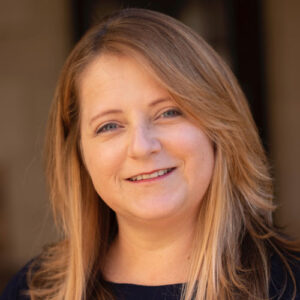Students Need to Know Teachers Believe in Them. Tracking Undercuts that Message
Arrington: By 8th grade, the best math teaching goes to kids in the top tracks. The rest are shut out and can never get back. But there's a better way

Get stories like this delivered straight to your inbox. Sign up for The 74 Newsletter
It’s a quote that has circulated all over social media: “My teacher thought I was smarter than I was, so I was.”
The origin is unknown, but the quote resonated deeply with educators, especially those in science, technology, engineering and math.
The foundational idea is crystal clear: The adults in schools have the power to shape the identities students build for themselves. This anonymous student got a message from their teacher that they could be more, be “smarter” — and that belief allowed them to become more.
It’s the type of message, both verbal and written, that children get from teachers every day. But the structures of schools themselves also send clear messages about teacher expectations and student belonging.
Tracking is one pernicious practice that sends damaging messages to students. Study after study shows that the most effective teaching methods are reserved for students in higher-level tracks and restricted for those in lower-level tracks. Yet, three-quarters of principals report that students in their schools have been tracked by mathematical ability by eighth grade, and research by 100kin10 on achieving equity in STEM — which by definition includes math — finds that students who are tracked early have no chance to switch to more challenging advanced courses.
Past research on tracking has largely focused on academic outcomes due to lower expectations and decreased opportunity to do meaningful mathematics. But tracking has a clear and harmful impact on student identity and sense of belonging as well.
It begs the question: What messages are sent to students about their ability to think about and do math when some receive engaging curricula and others mere rote instruction?
When I worked with Dr. Uri Treisman, university distinguished teaching professor of mathematics and public affairs at the University of Texas at Austin, he said that one of the worst things one can do is to proclaim that all students can do rigorous, meaningful mathematics and then give only some the opportunity to engage in that math. It is a systemic problem when the actions of educators lead students to believe only some students are capable of engaging in rich mathematics, problem solving and inquiry even though their words and mission statements say otherwise.
What would it look like if a way of thinking that mirrors Treisman’s sentiment were applied? One based on the true conviction that all students are mathematically brilliant and that adults genuinely expect them to succeed?
It would require that every student be provided with the content, curriculum and instructional strategies traditionally reserved for higher-level track students, and ensuring each of them engaged with rigorous mathematics and with one another. It would take focusing on each student’s talents and gifts instead of weaknesses and providing flexible instructional strategies and class groupings based on interests and strengths.
One new structure that embodies these mindset shifts is mathematical pathways, which allows students to choose a focused course of study in math for their last two years of high school. They are provided with multiple options for classes that best match their career ambitions, such as statistics, data science and quantitative reasoning for aspiring journalists and calculus for those seeking to become engineers.
Pathways do sort students, but unlike tracking, they are grouped based on relevance of a particular class, not on perceived ability. When implemented effectively, every pathway provides meaningful mathematics that prepare students for the critical transition between high school and postsecondary endeavors.
Pathways leverage positive student identities, reinforce a sense of belonging by recognizing that all children are mathematically exceptional and send a clear signal that teachers expect their success. At the same time, this structure acknowledges that students have different aspirations for their lives and allows them to focus on building the mathematical knowledge and skills that best prepare them to achieve them.
In 2015, five major professional associations called for the implementation of multiple mathematics pathways so students could find the choice that best aligned with their desired field of study. This flexibility encourages high schoolers to find relevance and joy in mathematics that will support them in achieving their ambitions. When students are engaged with mathematics that connects with their interests, they are more motivated and more likely to succeed.
Developing mathematical pathways that support student belonging is inarguably challenging, and shifting away from inequitable practices like tracking and attending to student identity and belonging adds even greater complexity. But the effort is worth it. When adults in a school shift their mindsets to ensure that all students can access more meaningful content, it demonstrates to all students that their teachers believe they belong where deep, mathematical thinking happens.
What would it look like if every 6-year-old had a teacher who made them think they were smarter, and so they were?
Get stories like these delivered straight to your inbox. Sign up for The 74 Newsletter

;)
